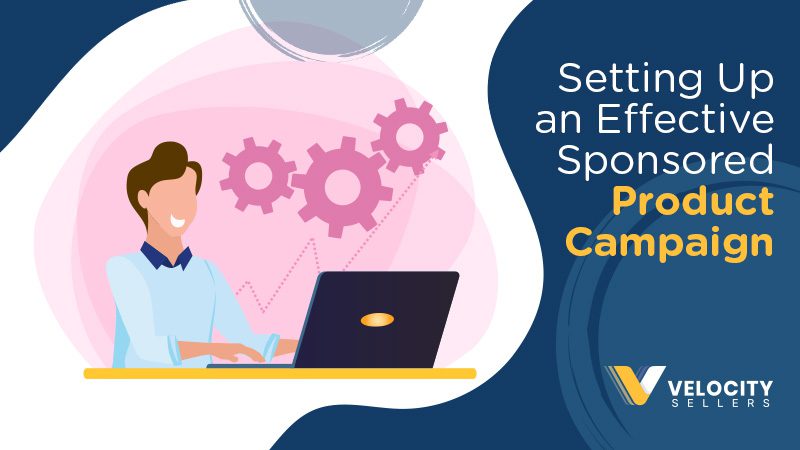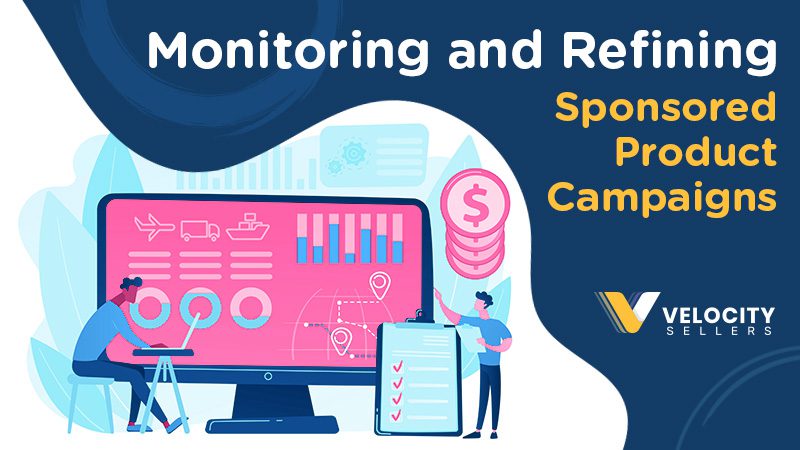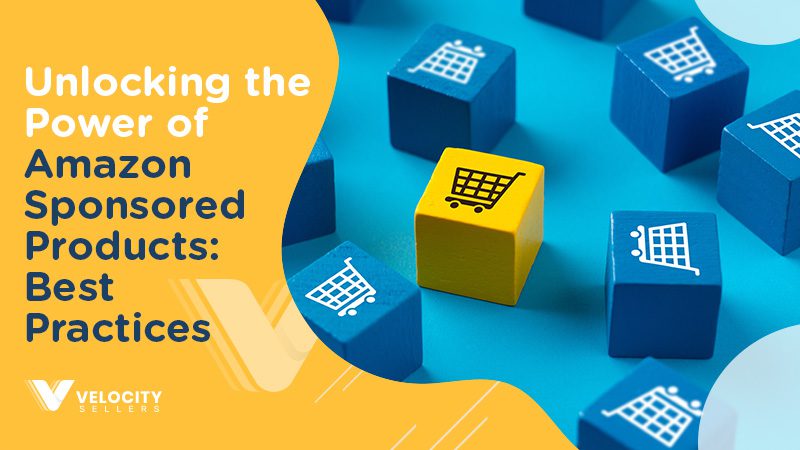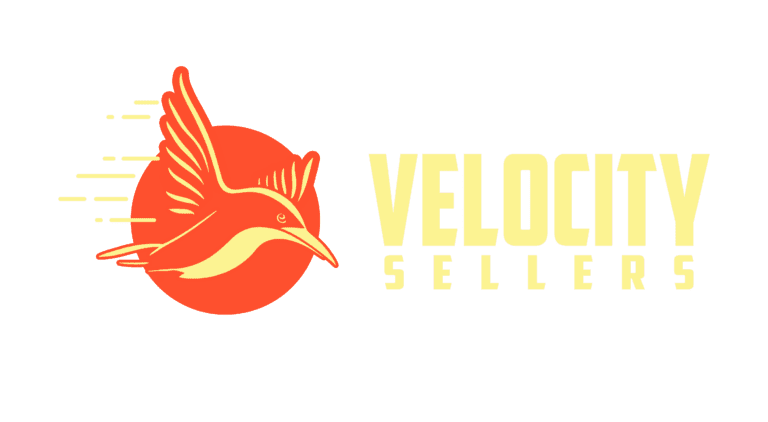Amazon Sponsored Products are a game-changer for sellers and businesses looking to skyrocket their sales and visibility within the highly competitive platform. These ads serve as a powerful tool to amplify your product’s reach and attract the attention of potential customers. By strategically placing your products in search results and product detail pages, Sponsored Products significantly enhance your visibility and increase the likelihood of conversions. However, it’s not enough to simply run Sponsored Product campaigns. To truly unlock their power and achieve optimal results, it’s essential to implement best practices. These best practices encompass a range of techniques, from conducting thorough research and optimizing product listings to refining targeting strategies and monitoring performance metrics.
Let’s examine a few illustrative examples:
Conducting Thorough Research: Thorough keyword research is the foundation of a successful sponsored product campaign. By identifying relevant keywords with high search volume and low competition, you can ensure that your ads reach the right audience, increasing the chances of conversion.
Optimizing Product Listings: Crafting compelling and persuasive product listings is essential for maximizing the impact of your sponsored product campaigns. By optimizing your product titles, bullet points, and descriptions with relevant keywords and appealing copy, you can capture the attention of potential customers and entice them to make a purchase.
Refining Targeting Strategies: Creating targeted ad groups based on categories, keywords, or other relevant factors allows you to tailor your campaigns to specific customer segments. This helps you deliver your ads to the most relevant audience, increasing the likelihood of generating qualified clicks and conversions.
Monitoring Performance Metrics: Regularly tracking key performance metrics such as impressions, clicks, click-through rates (CTR), and conversions is vital for understanding the effectiveness of your campaigns. By analyzing these metrics, you can identify areas for improvement and make data-driven decisions to optimize your campaigns.
By embracing these best practices, you can fine-tune your sponsored product campaigns, driving higher sales and gaining a competitive edge in the Amazon marketplace. These techniques work harmoniously to ensure your ads are targeted, optimized, and continuously refined for maximum effectiveness.
Understanding Amazon Sponsored Products
- Define Amazon Sponsored Products and how they work.
- Explain the benefits of using sponsored products for sellers and businesses.
- Discuss the different types of sponsored product ads available on Amazon.
Amazon Sponsored Products are pivotal in boosting sales and visibility for sellers and businesses on the platform. To fully grasp their potential, it is essential to understand the fundamental aspects of Amazon Sponsored Products, the benefits they offer, and the various types of sponsored product ads available.
Amazon Sponsored Products can be defined as a form of advertising on Amazon that allows sellers to promote their products directly within search results and product detail pages. These ads appear alongside organic search results, giving them prime visibility to potential customers actively searching for related products.
The benefits of using Sponsored Products are multifaceted. Firstly, they increase product visibility, allowing sellers to reach a broader audience and stand out in the competitive marketplace. By promoting their products in prominent positions, sellers can attract more clicks, impressions, and conversions.
Secondly, Sponsored Products provide a boost in sales. These ads’ increased visibility and targeted placement increase the chances of product discovery and drive traffic to the seller’s product listing. This heightened exposure often leads to higher sales volumes and increased revenue.
Thirdly, Sponsored Products enable sellers to enhance their organic rankings. The increased sales and traffic generated by sponsored ads contribute to improved organic rankings within Amazon’s search algorithm. This positive impact can have long-term benefits, as higher organic rankings lead to sustained visibility and increased sales potential.
Amazon offers different sponsored product ads to cater to diverse advertising goals and strategies. The most common styles include Sponsored Product Ads, which appear in search results and product detail pages; Sponsored Brands, which showcase a brand logo, headline, and multiple products; and Product Display Ads, which target specific product pages or related interests.
Examples of Amazon Sponsored Products include:
Sponsored Product Ads: These appear within search results and product detail pages. They feature a product image, title, price, and sponsored label. When shoppers click on the ad, they are directed to the product listing page.
Sponsored Brands: Formerly known as Headline Search Ads, Sponsored Brands showcase a brand logo, a custom headline, and multiple product listings. They often appear at the top of search results and help promote brand visibility and recognition.
Product Display Ads: These ads target specific product pages or interests. They can be displayed on related product detail pages, customer reviews, or Amazon marketing emails. Product Display Ads aim to capture the attention of shoppers browsing similar products or showing interest in related items.
These examples illustrate the versatility and reach of Amazon Sponsored Products, offering sellers and businesses a range of options to effectively promote their products, increase visibility, and drive sales on the platform.
Setting Up an Effective Sponsored Product Campaign


Research
- Discuss the importance of conducting thorough keyword research.
- Explain how to identify relevant keywords with high search volume and low competition.
Conducting thorough keyword research is the cornerstone of a well-optimized sponsored product campaign. It allows you to identify relevant keywords that potential customers use to search for Amazon products. By targeting these keywords, you can increase the visibility of your products and attract qualified traffic.
To begin, utilize Amazon’s search bar to gather initial keyword ideas. Please consider the suggested search terms, as they can provide valuable insights into popular queries. Additionally, leverage keyword research tools, both free and paid, to expand your list of relevant keywords.
Here are some examples:
Amazon’s Auto-Suggest and Related Searches: As you type in a keyword, Amazon’s auto-suggest feature provides valuable insights into customer search behavior with its dropdown of suggested terms. Scroll to the bottom of the search results page for the “Related Searches” section to discover additional keyword ideas.
Google Keyword Planner: Although primarily designed for Google Ads, the Google Keyword Planner can also be helpful for Amazon keyword research. Enter relevant keywords or product categories, and the tool provides search volume, competition, and keyword variations data. This helps you identify high-volume keywords relevant to your Amazon Sponsored Products campaign.
SEMrush: SEMrush is a powerful keyword research tool that provides comprehensive data and insights. It allows you to analyze keywords, search volumes, keyword difficulty, and competitive analysis. With SEMrush, you can identify long-tail keywords, uncover competitor strategies, and discover niche opportunities to optimize your sponsored product campaigns effectively.
Helium 10: Helium 10 is a suite of tools designed specifically for Amazon sellers. It offers various features, including a keyword research tool called “Cerebro.” Cerebro provides valuable insights into search volume, keyword trends, and competitor analysis. It also includes features like reverse ASIN lookup, allowing you to discover the keywords your competitors rank for.
Optimizing product listings
- Provide tips on optimizing product titles, bullet points, and descriptions for better visibility.
- Highlight the significance of compelling and persuasive copywriting.
Optimizing your product listings is essential for improving visibility and attracting potential customers. Start by optimizing your product titles, ensuring they are concise, descriptive, and include relevant keywords. Incorporate key product attributes and unique selling points to differentiate your listing from competitors.
Next, optimize the bullet points and product descriptions. Use bullet points to highlight your product’s key features and benefits, and ensure they are easy to read and scan. Expand on the bullet points in the product description, providing more detailed information and engaging copy that persuades customers to purchase. In the product description, it is essential to go beyond the bullet points and provide customers with compelling and persuasive copy that drives them to buy.
Compelling and persuasive copywriting is paramount. Craft product listings that resonate with your target audience, addressing their pain points and showcasing how your product solves their problems or fulfills their desires. A well-crafted product description can significantly influence a customer’s decision-making process.
Creating targeted ad groups
- Explain the concept of ad groups and their role in organizing sponsored product campaigns.
- Discuss strategies for creating targeted ad groups based on product categories, keywords, or other relevant factors.
Creating targeted ad groups is vital to organizing successful sponsored product campaigns. Understanding the concept of ad groups and implementing effective strategies can enhance your campaign’s control, relevance, and targeting precision.
Ad groups are clusters of products that share similar characteristics or target specific keywords. They allow for precise control over bidding, targeting, and ad customization. By grouping related products based on categories, subcategories, brands, or attributes, you can tailor your bidding strategies and ad content to specific customer segments, maximizing campaign impact and relevance.
To create targeted ad groups, consider the following strategies:
Product Categories: Organize ad groups based on product categories. For example, if you offer electronics, create separate ad groups for smartphones, laptops, and tablets. This approach allows you to customize ads and bidding strategies for each category, maximizing relevance and targeting precision.
Keywords: Create ad groups centered around specific keywords. Identify high-value keywords relevant to your products with substantial search volume. Group products that align with these keywords, enabling targeted ads and tailored bidding strategies based on keyword performance.
Performance-Based: Analyze product performance metrics to create ad groups. Group products with similar performance patterns, such as high-converting products or those with higher profit margins. This strategy ensures efficient allocation of your advertising budget and prioritization of products with significant ROI.
Seasonal or Promotional: Consider creating ad groups for seasonal or promotional campaigns. Group products suitable for specific seasons, holidays, or promotions. This approach allows customized messaging and bidding strategies aligned with the event, maximizing the impact of your advertising efforts.
Organizing your sponsored product campaigns with well-defined ad groups provides better control, optimization, and targeting precision. By structuring campaigns based on product categories, keywords, performance, or promotional factors, you can maximize ad relevance, improve click-through rates, and drive higher conversions on the Amazon platform.
Monitoring and Refining Sponsored Product Campaigns


Tracking performance metrics
- Discuss key performance indicators (KPIs) to measure the success of sponsored product campaigns.
- Explain how to use Amazon’s advertising dashboard to monitor campaign performance.
A/B testing and experimentation
- Highlight the importance of testing different variations of ads, keywords, and targeting.
- Provide tips on conducting A/B tests and optimizing campaigns based on the results.
Adjusting bids and budgets
- Explain the role of bid optimization in maximizing ROI.
- Discuss strategies for adjusting bids and budgets based on campaign performance.
Advanced Techniques for Amazon Sponsored Products
To elevate the effectiveness of your sponsored product campaigns and unlock their full potential, it’s crucial to incorporate advanced techniques that leverage advertising automation tools and harness the power of cross-promotion and product targeting strategies.
Leveraging Advertising Automation Tools
- Introduce popular automation tools and their benefits.
- Provide recommendations for selecting and implementing automation solutions.
Introducing Automation Tools: Embrace the advantages of advertising automation tools to streamline and optimize your sponsored product campaigns. These tools offer a range of benefits, including efficient bid management, automated keyword suggestions, campaign monitoring, and comprehensive performance analytics. Some popular automation tools in the market include Ad Badger, Sellics, and Teikametrics.
Recommendations for Selecting and Implementing Automation Solutions: When choosing and implementing automation solutions, you must consider various factors, such as your budget, specific campaign goals, and scalability requirements. Thoroughly research and evaluate different tools based on their features, customer reviews, and compatibility with your Amazon seller account. Select a tool that aligns with your unique needs and seamlessly integrates into your workflow.
Cross-promotion and product targeting
- Discuss the concept of cross-promoting products through sponsored product campaigns.
- Explain how to use product targeting to reach relevant audiences.
Cross-Promotion: Unlock the potential of cross-promoting products through sponsored product campaigns. This strategy involves strategically featuring complementary or related products to increase cross-selling opportunities and capture the attention of customers who may be interested in multiple items. For instance, if you sell cameras, consider showcasing camera lenses or accessories within your sponsored product ads, encouraging customers to explore additional offerings.
Product Targeting: Harness the power of product targeting to reach highly relevant audiences and amplify the visibility of your sponsored product campaigns. With product targeting, you can select specific ASINs (Amazon Standard Identification Numbers) or product categories to display your ads. This approach allows you to connect with customers actively browsing or considering similar products, significantly improving the chances of attracting qualified traffic and driving conversions.
By leveraging automation tools, optimize campaign management, enhance efficiency, and achieve better results. Integrate cross-promotion techniques to maximize cross-selling and deepen customer engagement. Utilize product targeting to reach your audience and amplify campaign visibility precisely. These techniques refine your campaigns, drive higher sales, and unlock success in your Amazon Sponsored Products endeavors.
To conclude, this comprehensive article has underscored the following essential aspects for harnessing the maximum potential of Amazon Sponsored Products:
- Implement Best Practices: By conducting thorough research, optimizing product listings, creating targeted ad groups, and monitoring performance metrics, sellers and businesses can maximize the effectiveness of their campaigns.
- Continuous Optimization: Continuous monitoring, A/B testing, and adjusting bids and budgets based on performance metrics is essential for achieving optimal results and staying ahead in the competitive marketplace.
Take Action: We strongly encourage readers to apply the best practices outlined in this article actively. By conducting thorough keyword research, refining product listings, creating well-structured ad groups, and leveraging advanced techniques, sellers and businesses can unlock the full potential of Amazon Sponsored Products.
Key Takeaways from the Article
Amazon Sponsored Products present an unparalleled opportunity for sellers and businesses to expand their reach, drive conversions, and thrive in the dynamic marketplace. By steadfastly implementing the recommended best practices and perpetually refining their campaigns, they can unlock the full potential of Amazon Sponsored Products and attain exceptional results that propel their success to new heights.
To conclude, this comprehensive article has underscored the following essential aspects for harnessing the maximum potential of Amazon Sponsored Products:
Implement Best Practices: By conducting thorough research, optimizing product listings, creating targeted ad groups, and monitoring performance metrics, sellers and businesses can maximize the effectiveness of their campaigns.
Continuous Optimization: Continuous monitoring, A/B testing, and adjusting bids and budgets based on performance metrics is essential for achieving optimal results and staying ahead in the competitive marketplace.
Take Action: We strongly encourage readers to apply the best practices outlined in this article actively. By conducting thorough keyword research, refining product listings, creating well-structured ad groups, and leveraging advanced techniques, sellers and businesses can unlock the full potential of Amazon Sponsored Products.
Amazon Sponsored Products present an unparalleled opportunity for sellers and businesses to expand their reach, drive conversions, and thrive in the dynamic marketplace. By steadfastly implementing the recommended best practices and perpetually refining their campaigns, they can unlock the full potential of Amazon Sponsored Products and attain exceptional results that propel their success to new heights.


